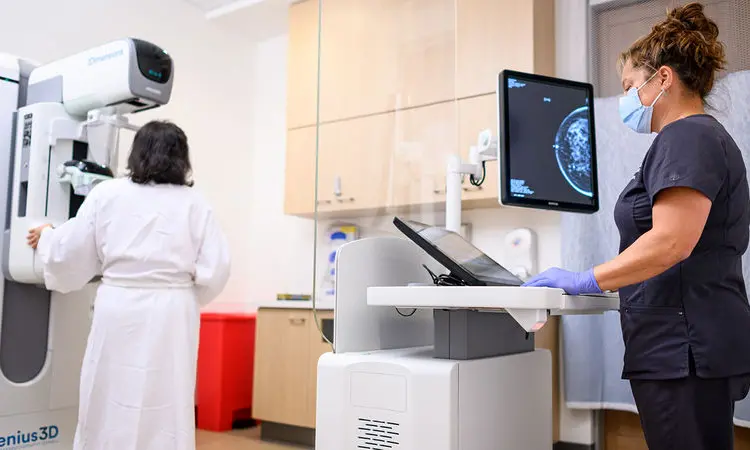- Home
- Medical news & Guidelines
- Anesthesiology
- Cardiology and CTVS
- Critical Care
- Dentistry
- Dermatology
- Diabetes and Endocrinology
- ENT
- Gastroenterology
- Medicine
- Nephrology
- Neurology
- Obstretics-Gynaecology
- Oncology
- Ophthalmology
- Orthopaedics
- Pediatrics-Neonatology
- Psychiatry
- Pulmonology
- Radiology
- Surgery
- Urology
- Laboratory Medicine
- Diet
- Nursing
- Paramedical
- Physiotherapy
- Health news
- Fact Check
- Bone Health Fact Check
- Brain Health Fact Check
- Cancer Related Fact Check
- Child Care Fact Check
- Dental and oral health fact check
- Diabetes and metabolic health fact check
- Diet and Nutrition Fact Check
- Eye and ENT Care Fact Check
- Fitness fact check
- Gut health fact check
- Heart health fact check
- Kidney health fact check
- Medical education fact check
- Men's health fact check
- Respiratory fact check
- Skin and hair care fact check
- Vaccine and Immunization fact check
- Women's health fact check
- AYUSH
- State News
- Andaman and Nicobar Islands
- Andhra Pradesh
- Arunachal Pradesh
- Assam
- Bihar
- Chandigarh
- Chattisgarh
- Dadra and Nagar Haveli
- Daman and Diu
- Delhi
- Goa
- Gujarat
- Haryana
- Himachal Pradesh
- Jammu & Kashmir
- Jharkhand
- Karnataka
- Kerala
- Ladakh
- Lakshadweep
- Madhya Pradesh
- Maharashtra
- Manipur
- Meghalaya
- Mizoram
- Nagaland
- Odisha
- Puducherry
- Punjab
- Rajasthan
- Sikkim
- Tamil Nadu
- Telangana
- Tripura
- Uttar Pradesh
- Uttrakhand
- West Bengal
- Medical Education
- Industry
Contrast-enhanced digital mammography along with Ultrasound or MRI Predicts True Positive Results: AJR

Contrast-enhanced digital mammography (CEDM) combines the high spatial resolution of mammography with the improved enhancement provided by contrast medium. When MRI is unavailable or contraindicated, CEDM can be a valuable alternative in the diagnostic workup of abnormal screening mammograms, preoperative imaging of breast cancers, evaluation of response to neoadjuvant chemotherapy (NAC), and screening of high-risk populations. A recent study finding suggests that low-energy mammographic findings with associated enhancement or breast sonography or MRI might predict a true-positive result. The study findings were published in the American Journal of Roentgenology on November 24, 2021.
CEDM is one of the relatively novel imaging modalities and has been shown to outperform standard mammography while performing comparably to contrast-enhanced MRI. It provides low-energy images comparable to mammographic images and post-contrast recombined images to evaluate tumour neovascularity. CEDM allows better evaluation of calcifications by their visualization on low-energy images combined with enhancement criteria on the contrast-enhanced recombined images. Researchers of the Memorial Sloan Kettering Cancer Center, New York, recently conducted a study to compare imaging characteristics of false-positive and true-positive findings on CEDM.
In this retrospective study, the researchers included a total of 157 women who underwent baseline screening CEDM and were assessed with BI-RADS category 0, 3, 4, or 5 and who underwent biopsy with histopathologic diagnosis or had two-year imaging follow-up. They extracted lesion characteristics from CEDM reports. They determined a true-positive finding as a lesion in which biopsy yielded malignancy and a false-positive finding as a lesion in which biopsy yielded benign or benign high-risk pathology, or two-year imaging follow-up was negative.
Key findings of the study were:
- Among 157 patients, the researchers identified 24 had a total of 26 true-positive lesions, and 133 had a total of 147 false-positive lesions.
- Out of 26 true-positive lesions, they observed 1 (4%) exhibited only a mammographic finding on low-iodine images, 13 (50%) had only a contrast finding on iodine images, and 12 (46%) had both a mammographic finding on low-energy images and a contrast finding on iodine images.
- They noted that the true-positive result was more likely for lesions present on both low-energy and iodine images (31%) than on low-energy images only (4%) or iodine images only (12%).
- Among lesions present on both low-energy and iodine images, they found that a true-positive result was more likely when the type of mammographic finding was asymmetry (50%) or calcification (80%) than mass (11%) or distortion (0%).
- They further noted that the true-positive result was more likely among those with, versus without, an ultrasound correlate (36% vs 9%), and also more likely among those with, versus without, an MRI correlate (18% vs 2%).
- They noted that out of 25 false-positive calcifications, 24 had no associated mammographic enhancement. And, out of 5 true-positive calcifications, 4 had mammographic enhancement.
The authors concluded, "A low-energy mammographic finding with associated enhancement, or a finding with sonographic or MRI correlate, predicts a true-positive result. Calcifications with associated enhancement had a high malignancy rate. Nonetheless, half of true-positive lesions enhanced on iodine images without a mammographic finding on low-energy images."
They further added, "These observations inform radiologists' management of abnormalities detected on screening CEDM."
For further information:
Medical Dialogues Bureau consists of a team of passionate medical/scientific writers, led by doctors and healthcare researchers. Our team efforts to bring you updated and timely news about the important happenings of the medical and healthcare sector. Our editorial team can be reached at editorial@medicaldialogues.in.
Dr Kamal Kant Kohli-MBBS, DTCD- a chest specialist with more than 30 years of practice and a flair for writing clinical articles, Dr Kamal Kant Kohli joined Medical Dialogues as a Chief Editor of Medical News. Besides writing articles, as an editor, he proofreads and verifies all the medical content published on Medical Dialogues including those coming from journals, studies,medical conferences,guidelines etc. Email: drkohli@medicaldialogues.in. Contact no. 011-43720751


